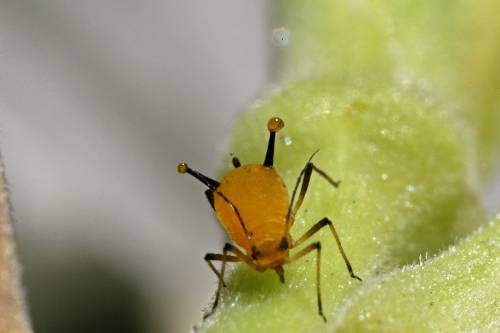Role Of Cornicles In Aphids
|
|
Pomerix staff
Published: 24-May-2023
|
Aphids can be easily recognized by their round, pear-shaped bodies with long legs and antennae. Because of their small size, aphids can sometimes be confused with similar plant-sucking bugs, such as psyllids, phylloxerids, or whiteflies. However, only aphids have cornicles, which are a pair of tube-like structures projecting backwards or upwards from the rear of their bodies, from the 5th or 6th abdominal segments. Cornicles are also called “siphunculi.”
Cornicles distinguish aphids from all other insects. This pair of tube-like structures plays an important role in defense against predators and chemical signaling. While cornicles come in different shapes, sizes, and colors, many are black at the tips. Some aphids have short, stout cornicles while others are quite long and extend past the end of the abdomen.
An important function of the cornicles is to excrete alarm pheromones. These alarm pheromones alert nearby aphids of potential danger, causing the aphids to twist their bodies, walk away, jump, fall, or fly. Alarm pheromones also heighten the senses of some aphids, like the effects of adrenaline on our own bodies. The other role that cornicles have is to excrete droplets of a quick-hardening defensive fluid called cornicle wax. This is a waxy secretion that contains triacylglycerols, and it sticks predators and quickly hardens, which slows them down or immobilizes them.
There has been a lot of confusion in the literature about the function of aphid cornicles. In the past, it was common to assume that cornicles exude honeydew. But as scientists learned more about the biology of aphids, we now know that honeydew is eliminated through the digestive tract in the same way as any other food waste. As a large, sticky droplet of honeydew accumulates at the top of the aphid’s abdomen, the aphid may try to toss it away from its body by kicking at it. Since the cornicles are also near the tip of the aphid’s abdomen, sometimes honeydew sticks to the cornicles. Now, the scientific consensus is that the cornicles do not exude honeydew. The function of the cornicles is to secrete quick-hardening defensive fluids, called “cornicle wax,” and to release alarm pheromones.
